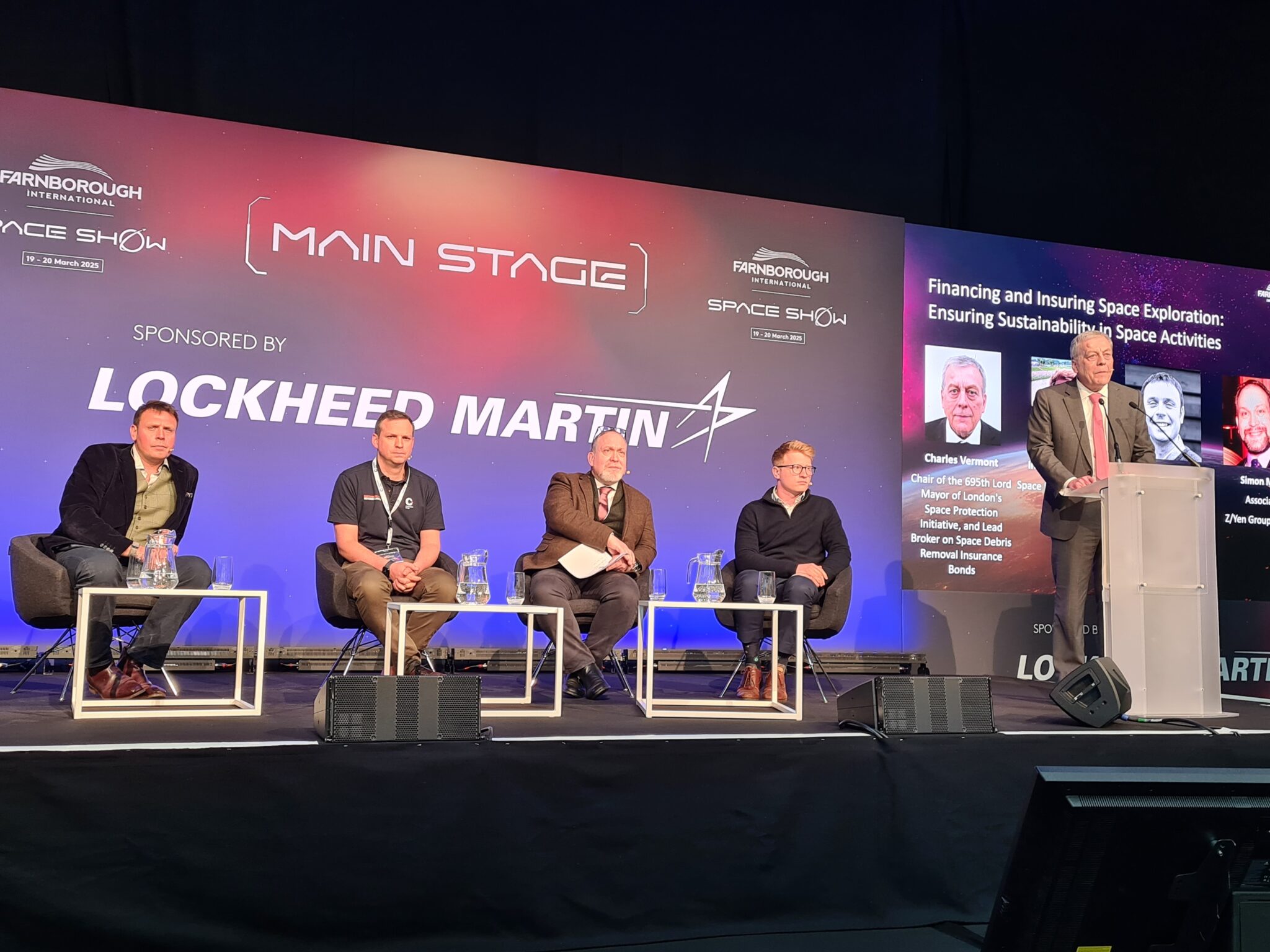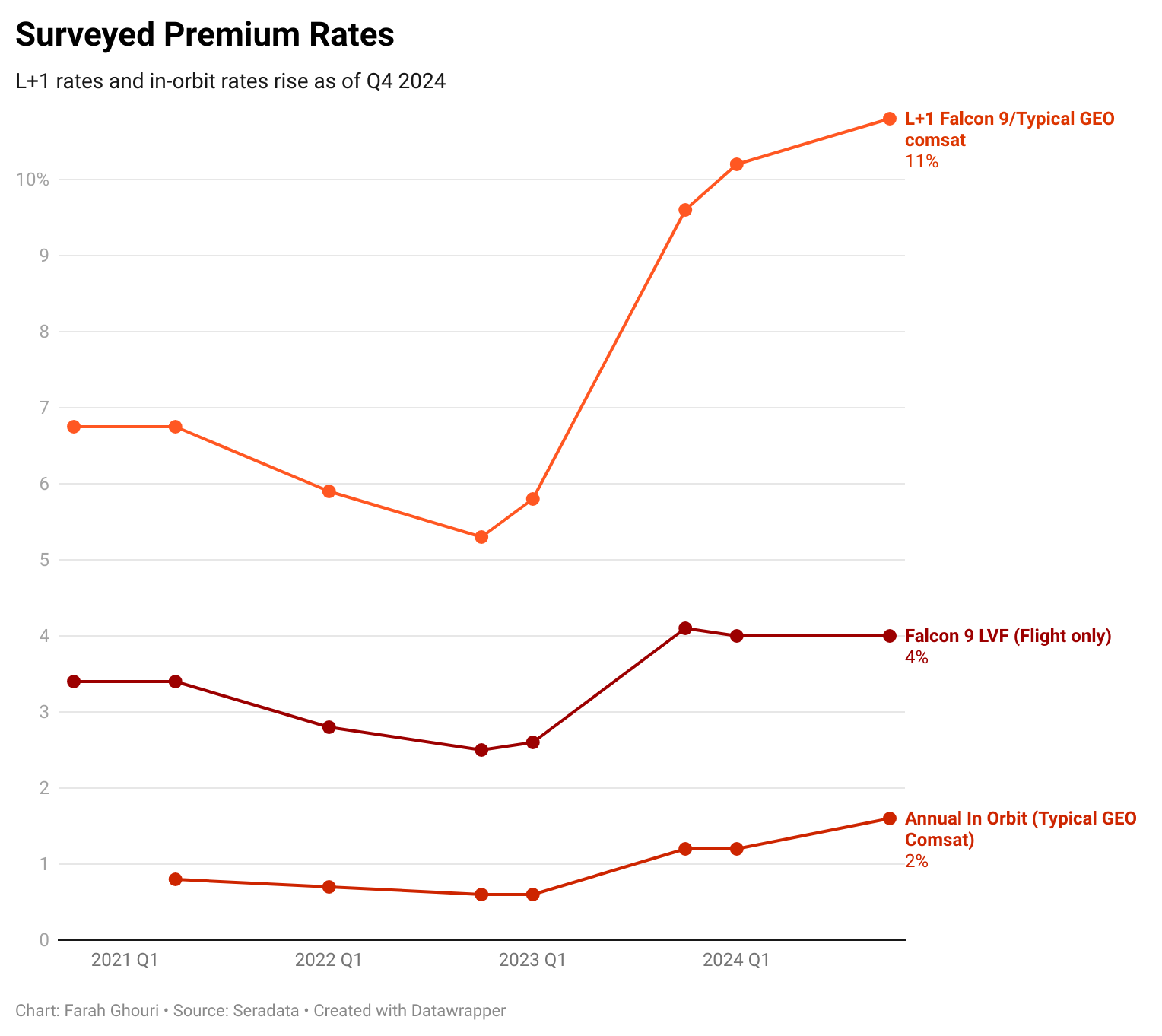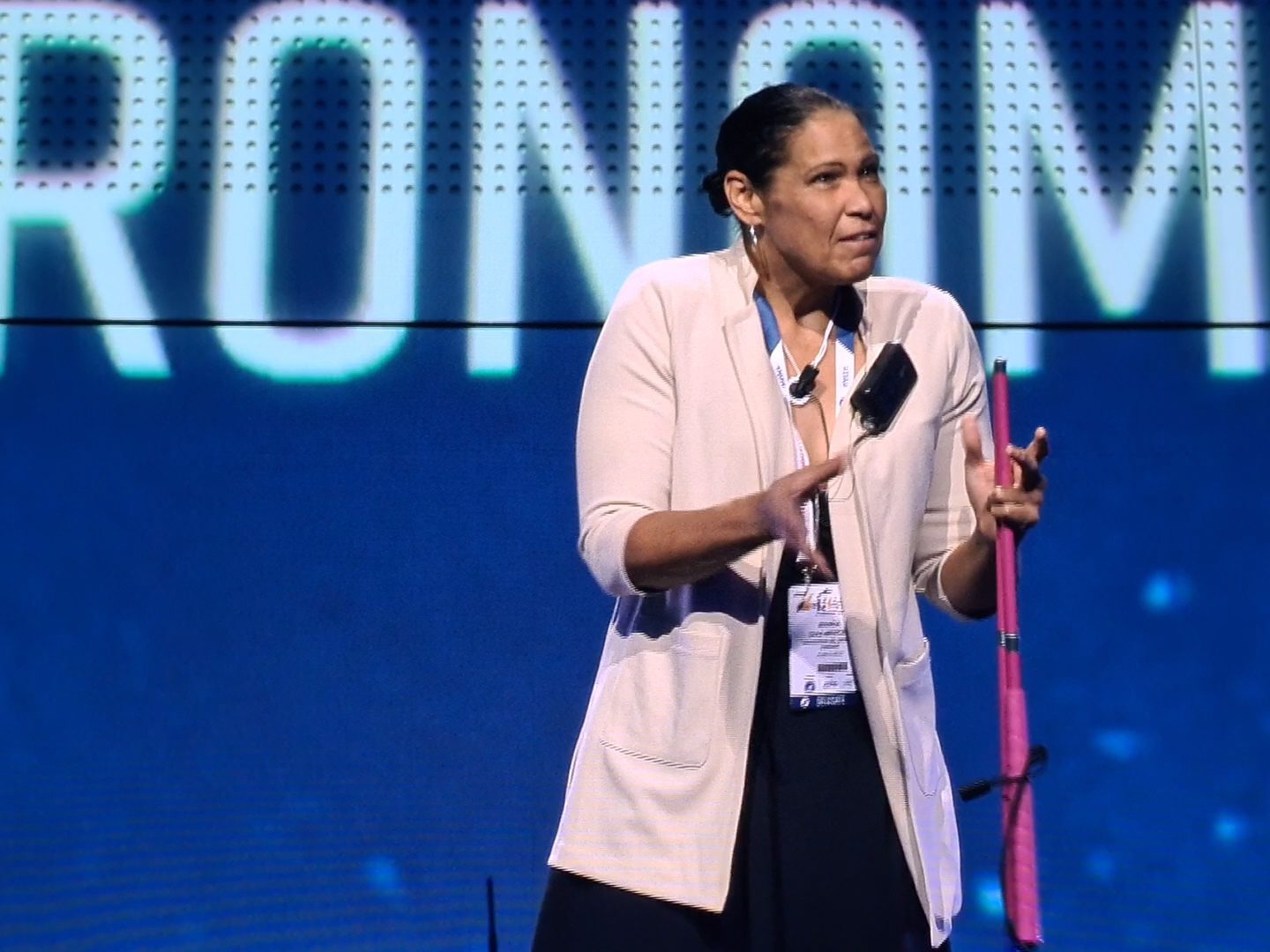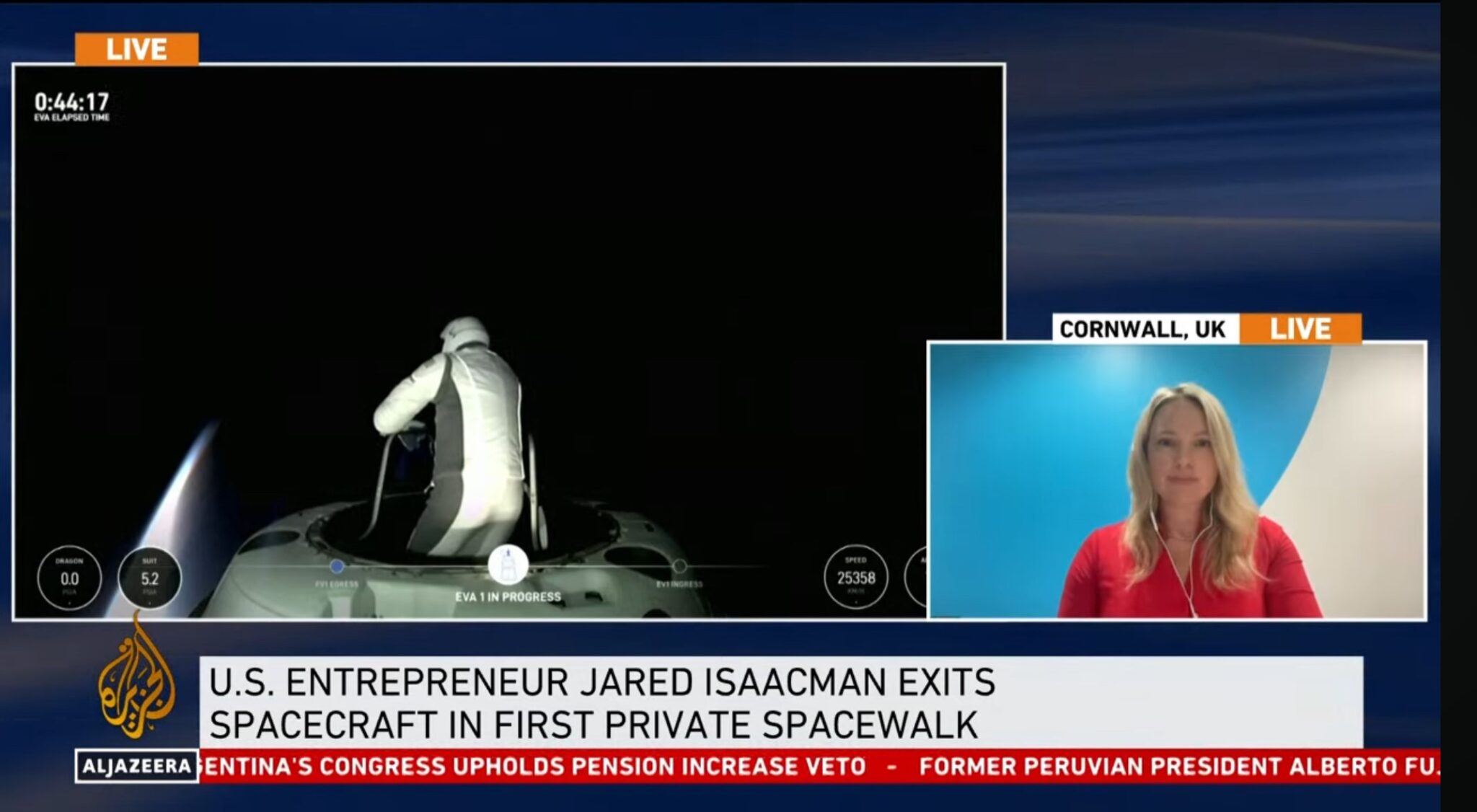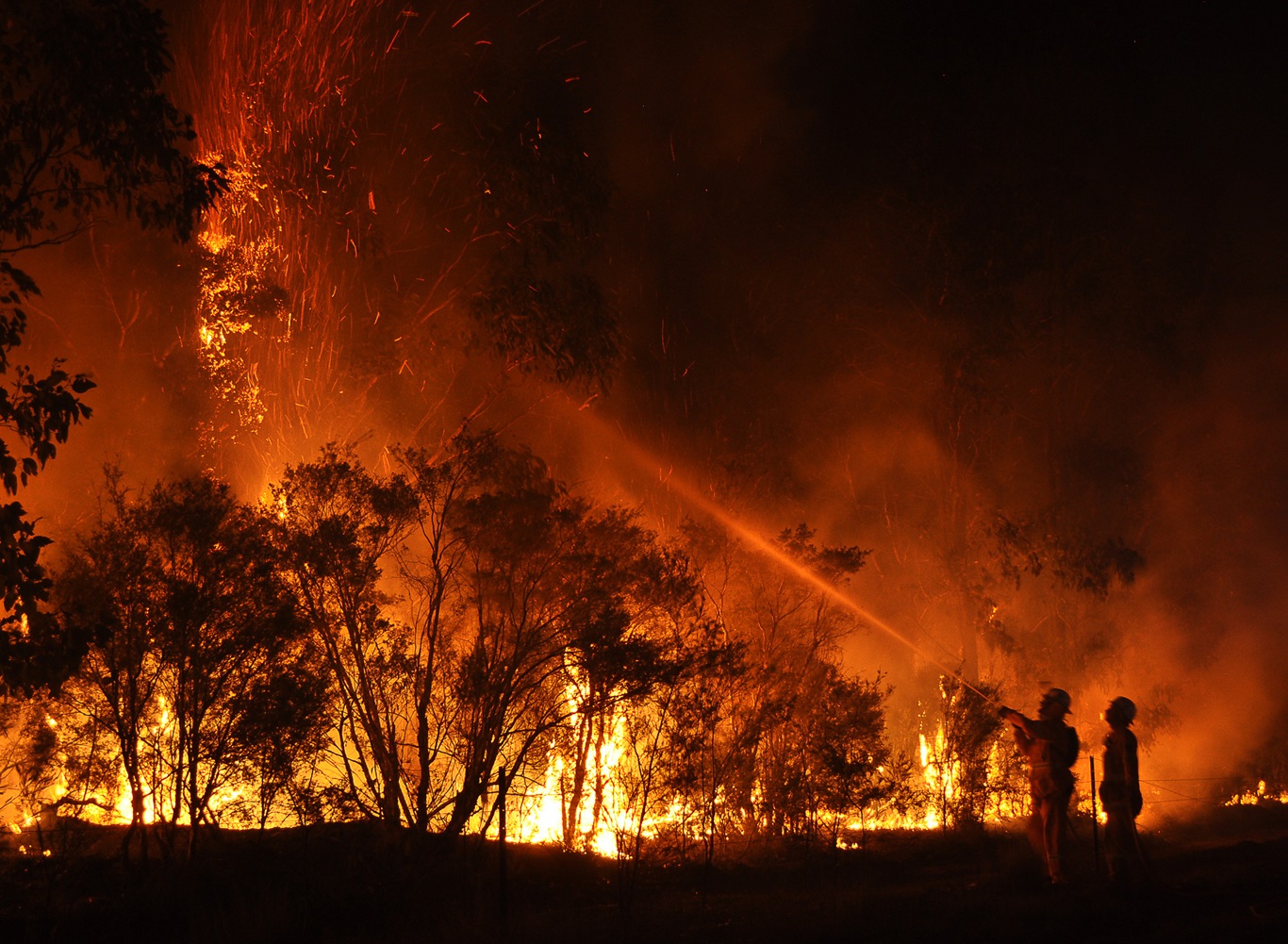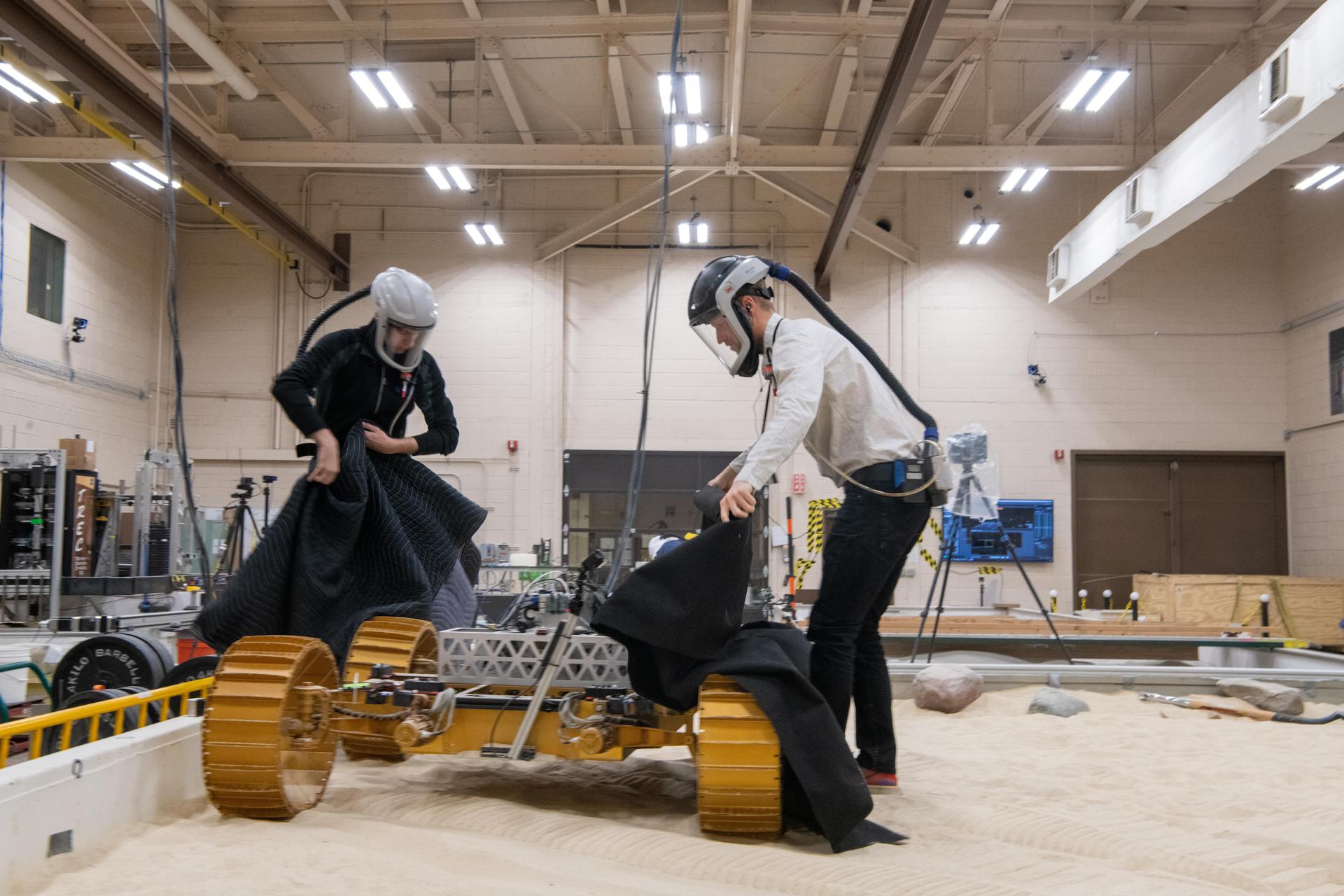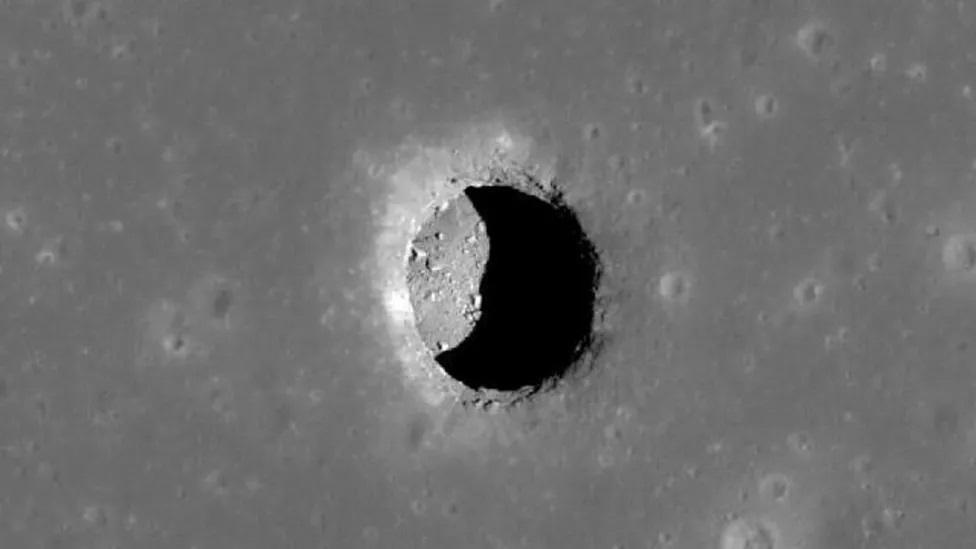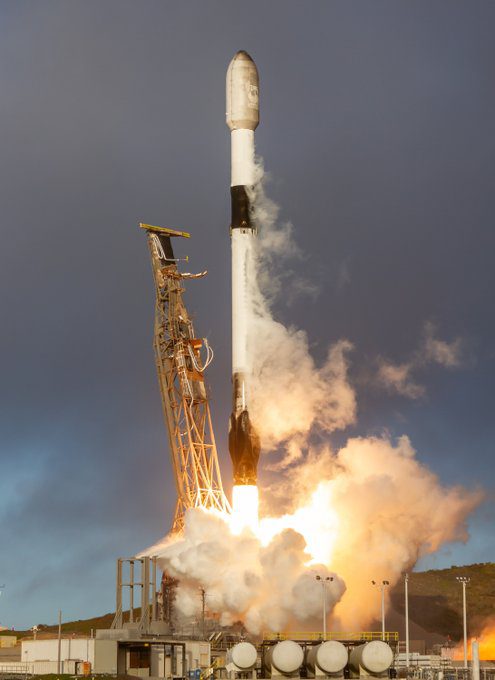The 17th International Space Conference held in Rome in May 2013, concentrated on the various threats and hazards to and from space. Organised by Pagnanelli Risk Solutions, its head Benito Paganelli noted at the start that while major space storms affecting Earth are a relatively low frequency event, their potential for major damage meant that they had to be taken seriously.
Solar storm danger to aircraft and transformers
Mauro Messerotti, Solar Physicist at the University of Trieste set the scene in describing the different types of radiation emanating in space. Apart from the high energy particles and gamma ray bursts from outer space, it is the emission of electromagnetic waves and charged particles from solar flares and Coronal Mass Ejections (CMEs) what most concern scientists on Earth. The science of solar geomagnetic super storms really began with the so-called Carrington event in 1859 which knocked out a good portion of the world’s nascent telegraphy system. However communications have come on since then and are likely to be much more disrupted by a solar “superstorm”.
According to a recent study in to Extreme Space Weather conducted by the Royal Academy of Engineering, if a fast-coronal mass ejection blasted charged particles with a magnetic field in the South-North direction as it reaches Earth it can both compress the Earth’s magnetic field and couple with it causing magnetic reconnection which allows solar wind charged particles and energy to enter the magnetosphere. Under such “geo-effective” conditions, the energy abstracted from the solar wind is transported to the night-side of the Earth and stored in the tail of the magnetosphere. When this energy reaches a critical level, an explosive release and reconnection occurs, allowing solar wind energy to be directed towards Earth causing a geomagnetic substorm. This process can be repeated several times.
Messeroti reminded the audience that HF (high frequency) communications can be disrupted by X rays from solar flares, and that ionospheric scintillations (rapid changes in the amplitude and phase of signals) can cause rapid changes in carrier-to-noise ratio which can, in turn, cause loss of phase lock in GPS receivers. This “GPS lock” issue usually occurs near the polar regions of the Earth usually on the Sunlit side as happened in December 2006. This could affect navigation systems, banking and communications services relying on GPS timing and even drilling operations.
Both Bruno Zolesi of the National Instiute of Geophysics and Volcanology (INGV) and Paul Breke of the Norwegian Space Centre noted that increasing ion densities in the polar regions during solar geomagneitic storms also make the region worst for HF radio absorption and that airlines flying these routes should take note (satellite communication which is now becoming more prevalent on aircraft is thought to be less prone to disruption depending on the RF band used). In superstorm conditions even radio transmissions at lower latitudes could be affected.
Disruption of the Earth’s magnetic field is also likely to cause magnetic compasses to be affected, though there was some relief to note that most modern aircraft had Intertial Navigation Systems to rely on for navigation even if GPS and magnetic compasses went awry. However, even these avionic systems can themselves be vulnerable to space weather. While X-rays move at the speed of light in vacuo, in many ways it is the following bursts of charged particles moving at millions of miles per hour emitted by CMEs that are more dangerous to modern technology.
Such particles can make aircraft prone to Single Event Upsets (SEUs) in their control logic as happened to a Qantas A330 (QF72) VH-QPA flying on 7 October 2008 when one it its Air Data Inertial Reference Unit triggered autopilot disconnection and commanded pitch down manoeuvres injuring cabin attendants and passengers.
“There is a lot of work done in avionics to try and mitigate by having multiple circuits and voting systems, so if one part of device is hit then others will compensate,” said Professor Mike Hapgood of the Rutherford Appleton Laboratory.
During extreme solar weather there is also an appreciable danger of radiation “over-dosing” for aircraft crews and passengers with passengers subject to up to 20 times the recommended maximum annual dose of 1 millisievert(1 mSv).
Hapgood reminded the audience that major events such as the “Carrington event” superstorms remained rare. further noting that while major CMEs were common, the rotation of the Sun resulted in many more “misses” than hits. Nevertheless, examination of historical solar events such as one in AD 775-776 discovered using Carbon 14 analysis of tree rings (spikes in Carbon 14 concentrations in the upper atmosphere has a direct connection to solar events) had shown that sola/geomagnetic superstorms were a relatively regular occurrence, with one happening on average once every one hundred years.
Nevertheless, despite their rarity, Professor Hapgood agreed that Carrington-class superstorms posed a risk to the human-built infrastructure with power systems and grids being especially at risk. He noted that rapidly changing magnetic fields can induce electric fields and hence large currents in the Earth’s crust which can blow “Earthed” power lines and transformers.
Solar storm threat to economics and law and order
Claire Jolly of the OECD also noted past major storms including the event of May 1921, which knocked out part of New York’s central railroad, and gave a warning that had such an event taken place at present times, the financial losses could have run to $1 trillion. As well as the 1921 occurrence, Dr Reto Schneider of the insurer Swiss Re reminded the audience that apart from this and the Carrington event of September 1859, other major storms including those of 1940, 1972 and 1989 which variously caused power grid black outs and communications systems failures.
Schneider also warned of the secondary consequences of a space superstorm if it were to happen today. For example, prolonged power black outs would mean that electronic trading systems would be shut down, ports and cargo supply systems would suffer major delays, cash machines would run short, hospitals and airports would begin to run out of fuel for emergency power generation after about one week and food would run out. In Swiss Re’s estimation after about two weeks should these services not be restored, rioting and looting would begin to break out. If these conditions were to continue could set back the economic prospects of nation states by decades.
Taking note of the recent “Extreme Space Weather” study by the Royal Academy of Engineering published earlier this year, to which he contributed, Professor Hapgood of the Rutherford Appleton Laboratory noted that some nations would do better than others in such conditions – but that often this was a quirk of past choices rather than deliberate design. “Some countries have a bit of luck.” said Professor Hapgood adding: “Some design decisions they made in the past make them more or less vulnerable. In Finland, for instance, their transformers are very resistant to space weather but that is not because they designed for it. It was a choice they made in the 1960s that just came out lucky for them.”
When asked if the UK should disconnect its system in the event of a warning, Hapgood noted that “balancing” the grid for maximium current dissipation and maximum redundancy would be better than shutting it down.
Both Professor Hapgood and Chris Felton of the UK Cabinet Office noted that the UK’s cellular/mobile communications system is more resilient to the effects of a solar event as they are not reliant on GPS system for their timing. USA is not in such a good position.
Nevertheless, the UK government was working on the scenario that after a solar superstorm, GPS and phone systems would be down for between one and three days partly due to interference and partly due to interruptions to the power supply, though the UK’s emergency services’ AirWave communications should probably be resilient.
Solar storms hold no fear for spacecraft operators who “will just ride them out”
After noting the tremendous growth in mobile communications data rates which are now expected to eventually reach gigabits per second, Inmarsat’s Senior Director of Satellite Operations, Mark Dickinson accepted that gaps still existed in global coverage. While there are estimates by the Royal Academy of Engineering that circa 10 per cent of all satellites will be affected in some way or other by a major solar storm, Dickinson remained more nonchalant about their threat to satellites noting that most satellites had been designed to be protected from serious space weather damage even if some satellites in lower orbits might suffer increased drag due to the expanded atmosphere.
Even the prospect of electrostatic discharges, Single Event Upsets (SEUs) and an accelerated power degradation of spacecraft solar arrays, left him, and more importantly, his firm’s satellites unmoved in Geostationary Earth Orbit (GEO), for he reasoned that the risk in moving a satellite to a more protective configuration was often worse than leaving a spacecraft to “ride it out” and that the precision and timeliness of space weather warnings was often less than desired.
“At the moment the notification (of space weather events) is imprecise in terms of magnetic orientation, magnitude and location. We don’t feel there is a concrete action that would make a measurable difference and worth the risk taking,” said Dickinson. Dickinson noted as an example that to mitigate solar array degradation an operator would have to move the solar arrays away from the sun. This would be the equivalent of an eclipse period and batteries would have to be used to provide power to the spacecraft. “Batteries are only designed for 72 minutes, so you could not move the arrays away for any length of time,” noted Dickinson.
Mark Dickinson remains however, in favour of a continuous improvement programme to make satellites more resilient to space weather and did appreciate that space weather can affect ground systems and satellite communications to a much greater extent.
With respect to signal interference risks, Dickinson noted that if the Ka-band signal ever suffered from interruption (most usually due to rain fade rather than ionospheric interference) the signal was designed to be seamlessly transferred to the L-band.
Marcel Fok, Space Underwriter at Swiss Re, supported this “do nothing” concept by noting that very few satellite total losses had ever been fully attributed to solar storms and that analysis showed that in reality that only about 10% of the insured fleet (valued at $20 billiion) was at risk from a super storm.
Dr Achim Enzian, Senior Underwriter at Munich Re agreed and suggested that there was no clear correlation between the solar cycle and insurance claims. He also suggested that solar storms were only half the story and that solar activity often tended highlight a spacecraft’s poor design or bad workmanship. He also noted that only the flux of high energy protons seemed to roughly follow the 11-year solar cycle – not electron flux
With respect to how space weather might affect manned spaceflight, Simonetta Di Pippo, ESA space policy expert and who until recently was head of Human Spaceflight at the European Space Agency noted that shielding for solar events would have to be employed for long range interplanetary missions.
Cesare Lobrascio of Thales Alenia Space noted that scientists are now examining different forms of active shielding (using superconducting electromagnets to create magnetic fields) and passive shielding (using water or other high hydrogen rich solutions/compounds). He also mentioned using hi-anti-oxidant food and drugs to counter the effect of radiation damage.
Solar weather forecasts are futile but “now-casting” works especially with side-on spacecraft
With respect to actually trying to predict space weather, Mauro Messerotti said: “Solar weather predictability is beyond present capabilities due to the limited knowledge of solar physics.”
Jan Woerner of the German Aerospace Agency, DLR, similarly noted how difficult it was to model the ionosphere and solar weather’s effect on it.
Messeroti warned that solar flares and CMEs can happen at any time in the solar cycle, not just at the peaks in solar activity. At best he noted all that could be achieved using present know-how is “now-casting” – that is registering events as they happen and giving due warning as they took place.
Scientists are fearful that once the two Stereo spacecraft which are currently moving away from the Earth in an orbit around the sun are out of position, there will not be any side-view warnings of such CME events in future. Some suggest that new spacecraft placed around in more stable side locations at either the L4 or L5 Lagrangian points (points of balanced gravitational fields), to the left and right of the Earth-Sun line, would provide excellent side on vantage points in order to warn Earth of incoming storms.
Professor Mike Hapgood explained that having spacecraft in front of a CME was also important. “The speed is important, but we also want to know the oriention of the magnetic field – whether it is north or south is really vital. When the fields are opposed, they can annihialite each other and through this process we call magnetic reconnection, opens up the Earth’s magnetic field allowing the energy from the solar wind in. When the two fields are north, they just compress against each other,” said Hapgood.
Mike Willis of the UK Space Agency emphasised that while warnings from SOHO and ACE which are located at Earth-Sun gravitational equilibrium Lagrangian point L1 about 1.5 million km from Earth on the Sun-Earth line are ideal for measuring the magnetic field components they can only give about 15-30 minutes warning (and less for a really fast storm front) and that side views of CME progressions were also needed.
Bill Murtagh of the National Oceanic and Atmospheric Administration (NOAA) was a little less pessimistic about the timeliness of solar storm warnings and the ability for companies to react noting that power companies can avoid taking redundant systems down before such a storm while federal agencies can make initial preparations for recovery. Bill Murtagh also noted that unlike commercial operators some scientific spacecraft mission engineers do take precautions when warned about oncoming space weather
However Murtagh reiterated the need for warning spacecraft both at L4/L5 and at L1 noting that Stereo mission moving around the Sun were able to have a side view of a CME and also be able to monitor sun spots as the sun rotates. When subsequently asked about putting a spacecraft at L4 or L5 his reply was: “Absolutely…There is a necessity for an L5 (spacecraft).”
Luigi Pasquali, CEO of the space firm Telespazio called for a more “federated” monitoring and forecasting system for space hazards.
E. Jason Steptoe, NASA’s Associate General Counsel worried that many of the solar science spacecraft had exceeded their design lives and noted the balancing act between running old ones and financing new designs. Nevertheless he looked forward to NASA’s DSCOVR mission which is set to be NASA’s new deep space climate observatory at L1 which is to be launched in November 2014. On a smaller scale (albeit with a much larger diameter), he noted that NASA’s SunJammer solar sail is due to fly close to L1 carrying lightweight solar science instrument expertise courtesy of two UK universities
SunJammer, a 38m x 38m square solar sail,will be carrying a light weight plasma sensor (supplied by Imperial college) and a lightweight magnetometer (supplied by University College London) both of which, according to Bill Murtagh of NOAA will allow the magnetic field structure of the cloud, and the wind speed and density to be detected.
Other threats: debris, satellite piracy and cyberwarfare
Marcel Fok of Swiss Re had earlier reminded the audience that space insurance does cover damage to spacecraft it would not cover consequential loss (i.e. business interuption). Likewise, he warned that war, and terrorism are excluded from space insurance policies as is intentional interference with spacecraft. Steven Tucker, of Fitzpartick Hunt, Tucker, Colier, Pagano and Aubert called for better encryption in software to counter the threat though he wondered if off-the-shelf software with its lack of provenance is up to the task.
Exactly when a cyber attack consititutes an “act of war” was a question posed by,Mark Roberts of Atkins Security. He also noted that cyber attacks could also involve attempts to damage sensors (e.g. using lasers) in addition to the more usual computer attacks. With respect to the latter he noted that a rogue satellite taken over in a piratical attack could be used as a ramming device to collide with other satellites. Roberts went onto explain how relatively cheaply cyber attacks could be made (effectively all that is needed is a laptop and web connection) though he qualified this that costs rose dramatically if you wanted to make an attack in a stealthy “unattributable” way.
Both Roberts and later Luca Del Monte of ESA noted that space assets were a critical infrastructure as they listed the cyber attacks including command and control infiltration, jamming and transmission forgery that were now known about in the public domain. These included the hacking and disablement of ROSAT in 1998, jamming attack on Telstar 12 in 2003, the hacks of the control systems of Landsat 7 and Terra-EOS in 2007-2008.
Del Monte also referenced that Iran had managed to “spoof” GPS signals to get a US drone to land on its territory. Steven Tucker noted that The Iridium communications constellation had offered to boost L-band GPS signals using its system in order to stop jamming, while Anna Massuti, a Partner at LS LexJus Sinacta preferred to use satellilte constellations to detect perpetrators of such events.
ESA is to study space related cyber warfare and has announced an invitation to study cybersecurity. Del Monte noted however how commercial organisations were loath to share information with others about Cyber attacks. Apart from in orbit, Del Monte noted that space manufacturing and especially its supply chain may also be susceptible to cyber attack via Trojans and viruses.
Given that China has long been accused of several cyber intelligence gathering raids, Si Yan kept a straight face when he was asked what his firm did to defend against similar cyber raids. Si Yuan noted that CGWIC and its contractors maintained “traditional internet safety measures for itself and its contractors”.
Changing the subject, Claudio Portelli of the Italian Space Agency described how the recent meteor strike over Russia had concentrated minds as to the threat of near Earth objects passing the planet and methods of assessing their impact risk. Just as the solar astronomers wanted to put spacecraft to the side of any flight path of any coronal mass ejection, so Portelli recommended that spacecraft put at the Mars-Sun and Venus-Sun Lagrangian points would help the observation of approaching NEOs due to their better phase angle for observations.
On the subject of man made space debris, Claudio Portelli mentioned ESA’s SSA (Space Situational Awareness) programme noting that the debris most endangering spacecraft was in the 1-10 cm range, that is too small for radars to forewarn of, but too large to be shielded against. Lorenzo Cibin of CGS Imaging noted that new combined UHF radar and optical systems can get down to 7cm at 1100km range. While noting that preventative measures were better than very expensive active debris removal including the likes of harpoon technologies, Portello described the practical results of these including space telescopes not allowed to release their covers anymore and all GEO spacecraft having enough fuel to reach their safe “graveyard” 300km about the Geosynchronous arc.
Accidental space debris is one thing, but Sa’id Mosteshar, Director of the London Institute of Space Policy and Law, made the point that growth in 1-6kg cubesats were, in effect, a growth in space debris given that few cubesats could actually be controlled significantly in orbit.
Insurers post strong results but fret about falling rates, ageing workforce and new technology
Christ Kunstadter, Underwriter at XL noted that while space insurance remained profitable, that underwriters were concerned about falling premium rates and how premium payments tended to be weighted towards the second half of the year.
Kunstadter noted that 31% of the commercial spacecraft in orbit carried no in orbit insurance and that launch insurance had progressively become a much more important revenue generator for the space insurance market with 84% of the premium generated.
Peter Elson of the Broker JLT speciality did his bit for both brokers and his insured clients by saying that new technology was not a threat but more of an opportunity for the space insurance market. As evidence he pointed out that most of the recent claims for insurance loss came from “long established systems”.
David Wade, Underwriter at the Atrium Space Insurance Consortium (ASIC) noted that new technologies had major threats. For example, he explained that the more complex processed payloads were especially sensitive to power loss, while plans to use electric thrusters to raise spacecraft slowly to Geostationary Earth Orbits would be time consuming, and could be especially slow if a thruster failed. He also argued against long time periods between when the risk is placed on the market and the actual launch taking place.
David Wade had earlier warned the conference about aging workforces in the aerospace industry and how this could have an effect on quality, expertise and hence the reliability of launch and in orbit systems. As to who would replace them, Wade also noted a relative decline in students studying science and engineering at degree level. Meanwhile young professionals in these subjects were often choosing sectors offering higher rewards compared to working in engineering or science. In fact Wade was himself once one of these “young defectors” having moved from space engineering into the more lucrative world of space insurance via a stint in academia.
With respect to manned spaceflight and the onset of space tourism, Tim Wakeman at AON/ISB openly wondered which insurance market, aviation or space should cover such flights before stating that considering as aircraft flights would have certain advantages including liability limits and not having the “launching state” being liable for third party damage. With respect to the legal aspects of flying high net worth individuals on such flights, Wakeman also openly wondered if the basis of such flights being made under “informed consent” would be enforceable in law if something went wrong?
Marcel Fok, a space underwriter at Swiss Re agreed that such suborbital flights should really be treated as an aviation risk with liability regimes already in place.
Any other business: launch providers show their wares while ITAR regulation is relaxed (a bit)
Being in Rome, Anne Aufrere of Arianespace was keen to note the recent second launch success of Europe’s Vega vehicle, a launcher led by Italy. She also noted Arianespace’s bulging order book now standing at €48 billion. She noted that the so called EMEA countries were where demand for satellites was growing and it was also rising for non-Geostationary Transfer Orbit flights. Arianespace, as it battles to become better than marginally profitable, expect to raise its annual flight rates, raising this from six to seven flights for Ariane, from three to four for Soyuz and from two to three flights per year for Vega.
While China Great Wall Industries Corporation (CGWIC) remains best known as a launch provider, it has now become an outfit offering turnkey satellite solutions including construction of a satellite and its launch to orbit by subcontracting out its orders to its CAST stable mate. Both CGWIC and CAST are wholly owned by CASC.
John Ordway of Berliner, Corcoran, Ordway and Rowe noted that some of the new regulations were replacing ITAR with supposedly a laxer regime were sometimes just as complex for a company in trying to get export permissions than it was under ITAR. Ordway also noted that some items related to space technology were still surprisingly covered as potential weapons/munitions including man-rated technology elements (presumably because of the political ramifications of the space race) and items related to the servicing of spacecraft (anything that can approach a spacecraft can destroy it). Nevertheless Ordway noted that subsystems were becoming easier to export as they would no longer be covered by ITAR regulations.
On the subject of space law and legal entanglements, most of the legal panel agreed that going for arbitration was often a better solution than recourse to the courts – especially if one or both parties preferred some element of secrecy. Steve Koh, expert in international arbitration at Perkins Cole LLP noted the cases where hundreds of millions of dollars had been saved by defendants when binding arbitration went in their favour.
Vanessa Leigh noting how Italian scientists had been seen as scapegoats in the event of their failure to predict earthquakes, made an impassioned plea to have limits on the liability of individuals including pilots, engineers and air traffic controllers.
Conclusion: good science but insurers need more (solar) prominence and an afternoon cuppa!
At about 250 attendees or so, the conference was relatively well attended. Rome will always be a big draw but so was the space risks and solar science subject area. The venue hotel, the Hotel Parco dei Principi, had a certain old world shabby chic and did manage to lay-on some excellent buffet lunches. However, apparently for time reasons, the organisers decided to miss out some of the morning and afternoon coffee and tea breaks. At this unforgiveable omission, one this one attendee quipped that it felt like he was at an “austerity conference”.
While numbers were up, one thing that did become apparent however was that many satellite operators were missing from this meeting, with only Arabsat and Inmarsat having the wisdom to come in force. Perhaps that was down to the revelation that satellite operators are unconcerned about solar storms – an overconfidence that they may rue one day. Perhaps also, it was due to the operators’ absence that some space insurance brokers and underwriters also decided to stay away. Worse, was that the insurance session was relegated to the very last day when it really did deserve a better billing.
This was a shame. For while JLT’s Peter Elson and his witty putdowns helped, what was sorely missed at this event was the “cut and thrust” in full scale panel debates between brokers and underwriters and between manufacturers and insurers. Of course, these “Punch and Judy-style” knockabout arguments which made these conferences such fun in the past can still happen at the bienniel World Space Risk Forum, to be held in Dubai next year. Having said that, it really is a long time to wait for a good space punch-up (figuratively speaking of course) and one in the intervening years would not have gone amiss.
Nevertheless, despite these minor moans, we can thank Benito Pagnanelli and his able assistant Chiara Rossi for organising this event. The overall content of the conference itself was very good – especially in the field of solar science and its effects on Earth. And while there were a few too many Italians and a few too many intergovernmental types having relatively little of consequence to say, some of the other presenters (including other Italians) were so interesting that one found oneself regretting they were not given more time instead. You see, when it comes to space risks, fewer (good) speakers…and more tea breaks…can sometimes lead to a higher level of enlightenment.


